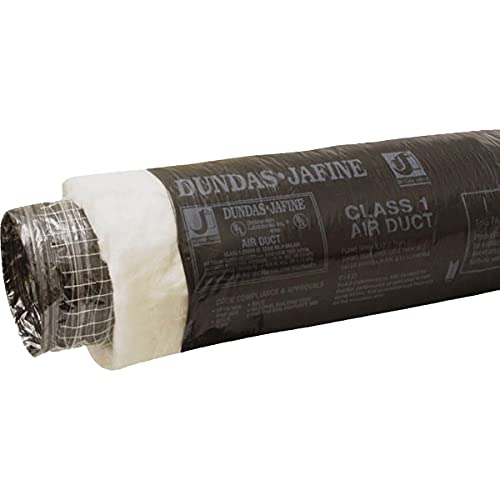If your house was constructed within the past 20 years, then it probably has an exhaust fan in its bathroom. The main purpose of a bathroom fan is to eliminate all the moisture that builds up in the bathroom after you take a shower or bath. However, there are times when a bathroom fan might drip.
This can become a problem because it adds moisture to your bathroom rather than takes it away. A leaking bathroom fan can stain ceilings, cause moisture damage, and promote mold growth on the ceiling around the fan vent, which you will have to remove before it causes health problems.

The bathroom fan starts dripping when warm moist air condensates in an uninsulated or poorly insulated ventilation duct. As the condensation forms on the wall of the ventilation duct, it begins to drip back down into the bathroom.
Bathroom Duct Condensation
The Principle of Condensation
If you remember your science class from high school, or even if you just think back to the last glass of ice water you drank, then you know that water droplets in the air will condense whenever the air comes into contact with colder air or a cold surface.
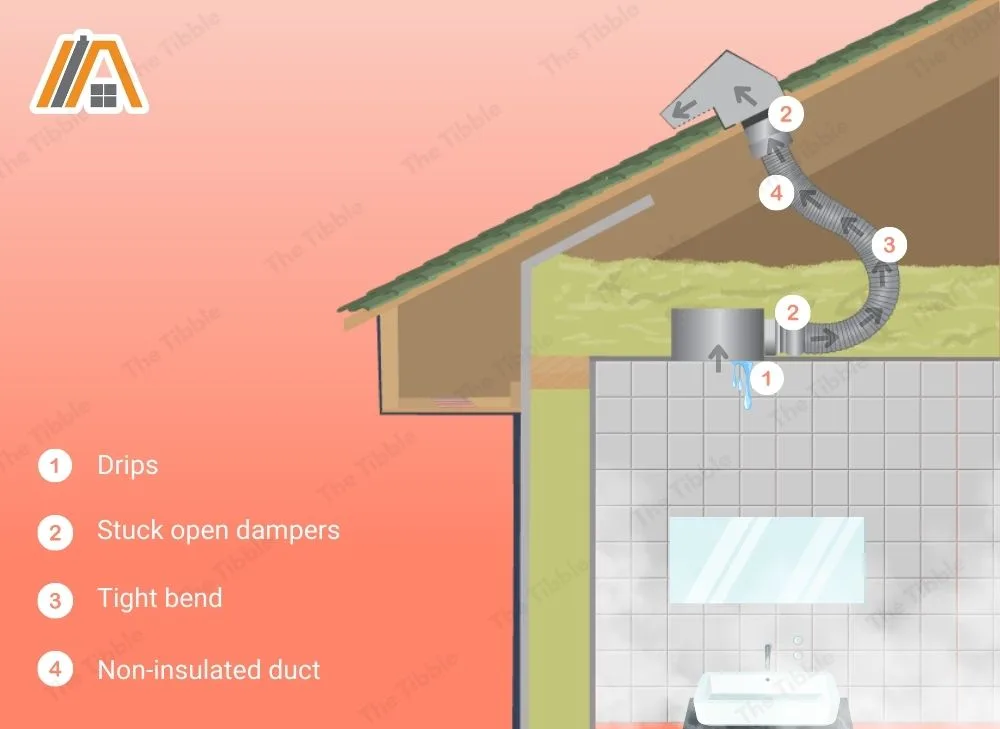
This is because water vaporizes at a certain temperature, and below that temperature, it will return to its liquid form. Additionally, as the air gets colder, it can hold less moisture (a governing principle for many weather systems).
Now, let’s apply this science to our bathroom ducting.
Winter
During the winter season, it is normally much colder outside than it is on the inside of your house. However, uninsulated (and even some insulated) attics, ceilings, and crawl spaces through which your bathroom fan’s ducting runs may be a similar temperature to the external environment.
If your ducts are also uninsulated, then they are not protected against the effects of the surrounding temperatures. The result is a cold duct filled with cold air (temperature transference).
When you shower, bathroom air becomes hot and humid. This air is pulled into the ductwork by the fan and ideally passes right through to be exhausted outside of the house.
However, when the hot and humid air comes into contact with the winter-chilled air in the duct and the cold surfaces of the ducts themselves, water droplets condense.
These droplets no longer rise like their vaporous counterparts, and they fall back down through the ducts and result in a dripping bathroom fan.
Insulating the duct will prevent the bathroom fan from dripping, there will be no brown spots around the fan, and the lifespan of the duct is increased since it will be dry and won’t rust. I speak more about duct insulation in a later section.
Summer
If your bathroom fan is dripping in summer, then it can still be the result of condensation. However, there are differences in how and where this condensation forms.
Firstly, when hot and humid summer air is surrounding your uninsulated ductwork, then there is a chance that the exhausted bathroom air passing through the duct is cooler than that in contact with the outside of the duct.
The result is condensation forming on the outside of the ducts.
This condensation then runs down the external surfaces of the ductwork. Some condensation is lost along the way, dripping off into the attic, ceiling, crawl space, walls, etc. Some water catches on joins and pools there.
However, there is still a measure of condensed water that finds its way back to the bathroom fan. It can’t drip out of the fan itself because it is not inside the ducts, but it can drip from around the fan housing.
Secondly, people like to blast their air conditioners inside their homes during summer. If your air conditioner is set to a low temperature, cool air could make its way inside your air duct. Then, after a shower, the moist warm air hits the conditioned air and causes water to drip from the bathroom fan.
If Dripping Is From Condensation, When Would It Appear?
You may notice water dripping down from the exhaust fan as soon as you get out of the shower. It could also take a few minutes for the water to drip down after you have gotten out of the shower.
It all depends on the size of your house and the length of your air duct system.
Bathroom Vent Leaking After Snow
Another reason for a leaky bathroom fan is when you have a lot of snow or ice on your roof by the vent for your bathroom fan. The accumulation of snow and ice may cause a bathroom fan to leak as soon as the frozen precipitation starts to melt.
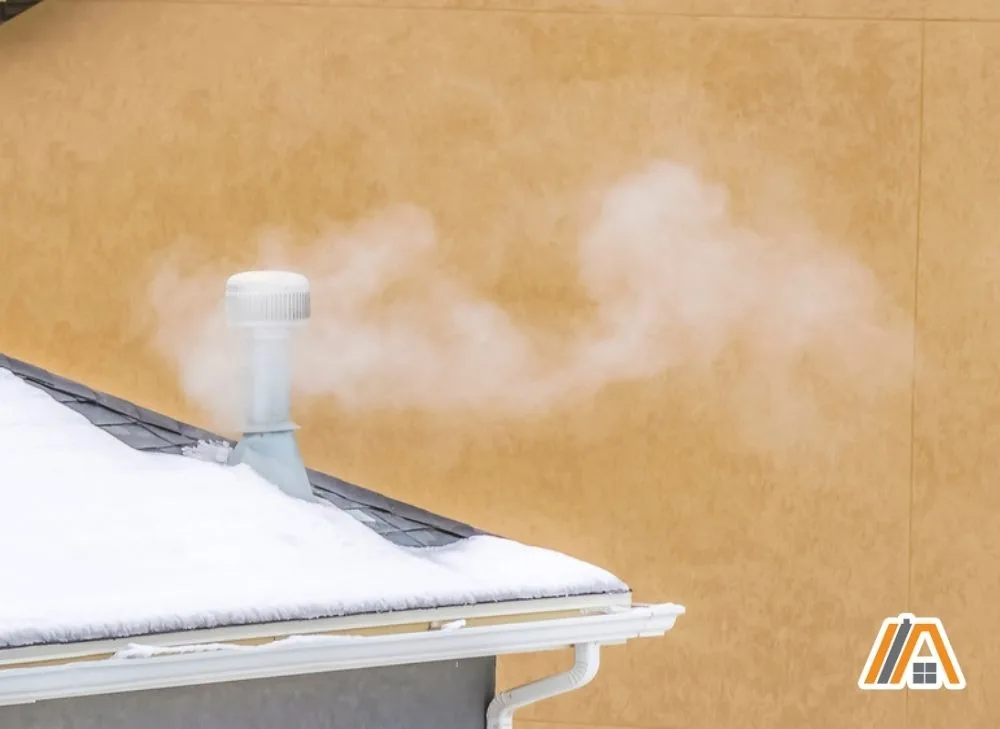
This is not necessarily when it starts to melt naturally as the weather warms. It can also happen as the moist warm air passes through the exhaust fan and comes out of the bathroom vent cover on the roof.
When the warm bathroom air makes contact with the snow and ice, they melt into water.
The water can flow through the vent cover, down the air duct, and out from the bathroom exhaust fan. Then you will have dripping water coming out of your exhaust fan.
You should be aware that this is not something that you should just accept.
The opening vent of your bathroom fan is supposed to extend far enough above the roof to account for anticipated snowfall, be covered or screened, and be surrounded by flashing.
Such designs should mitigate the chances of snow and ice melting into the ductwork except in extreme conditions of massive precipitation buildup.
Water Dripping From Bathroom Exhaust Fan When it Rains
It might seem obvious that water can accumulate on your roof when it rains outside. However, a fully functional exhaust fan system is supposed to prevent rainwater from entering through the vent cover on the roof. But this might not happen if certain conditions exist.
The problem is that rain could leak down into the bathroom if the vent cover is defective or not installed correctly.
The vertical slope creates an easy path for rainwater to flow into your bathroom fan once it is in the air duct.
Furthermore, in intense rainstorms, the direction or sheer volume of rain falling could result in water entering the fan ducts.
Rain and other dripping associated with broken vent hoods and faulty flashing are not as likely to be the cause of your dripping fan if you live in an apartment.
Old Exhaust Fans Can Drip
Bathroom fans do not last forever. If you shower every day and use your exhaust fan to eliminate the moisture in your bathroom each time you shower, then your fan will probably wear out after 5 to 10 years.
Older fans tend to slow down and have more trouble pulling moisture out of the bathroom. Because of this, a lot of that moist warm air won’t make it to the vent cover on the roof.
Instead, the warm air will stay trapped inside the air duct. This provides more opportunity for heat transference with the cold duct, which leads to condensation.
Additionally, even in insulated ducts, as the air accumulates in the ductwork, it will cool naturally, losing its capacity for holding moisture, and the water will drip back through the fan.
High Indoor Humidity Levels Can Result in Dripping Fans
A humid outdoor environment, such as occur in naturally humid regions, could potentially affect the humidity level on the inside of your home. It could affect the humidity in your air duct as well.
In such cases, your bathroom fan will struggle to keep up with the level of moisture in the air, even if it is functioning optimally and the moisture remaining in the duct can condense and drip out.
Bathroom Fan Dripping Brown Water
Clear water you can understand, but what about when your bathroom drips ugly brown water that stains your ceiling and walls?
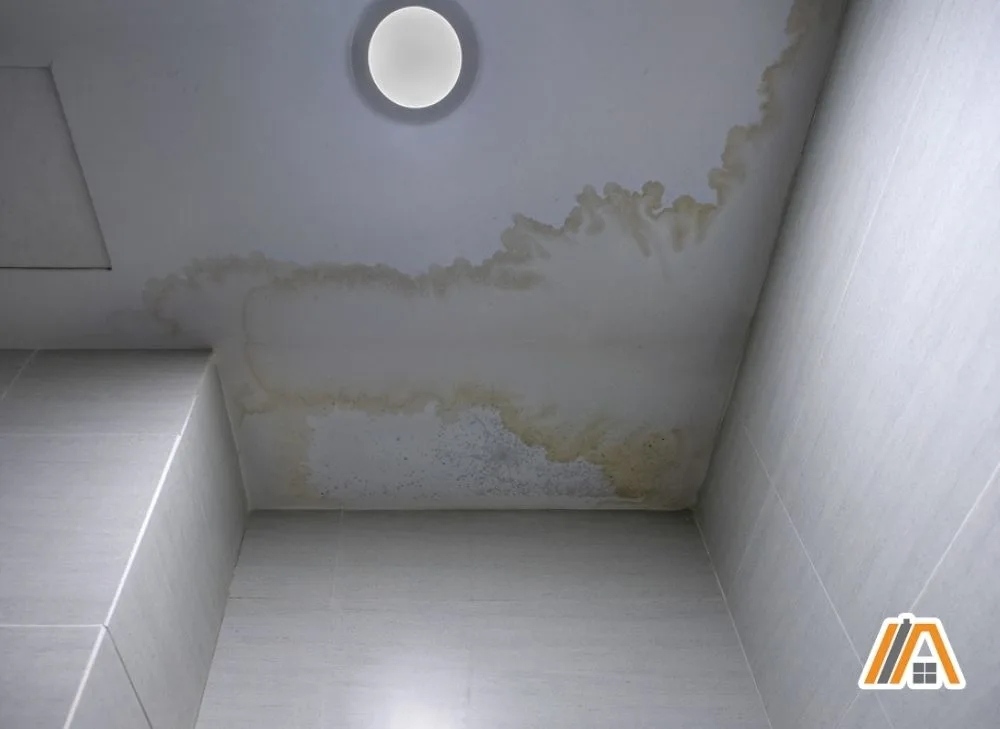
There is a simple explanation for this problem: dirt.
Exhaust fans don’t just pull steam out of the bathroom; they also pull whatever dust and other particulates are suspended in the air.
The dirt can then get deposited on the fan blades, housing, vent grille, and ducting. When water runs down the ducts and past the fan and vent, it can pick up this dirt, which turns the water brown.
Another source is the dirt carried in rain, ice, and snow.
If you notice a red/orange tint to the dripping water, and you don’t live in a place that has predominantly red earth, then you should investigate because your ducting or fan may have become rusted.
How to Stop Water Dripping From Bathroom Fan
Now you know where the water leak can originate; condensation, rainwater, ice, and snow can cause a leaking bathroom exhaust fan and an annoying dripping sound.
As mentioned, a properly functioning exhaust fan system should not leak water back into your bathroom from the vent exit. So, if you experience a leak from one of these natural elements, then it means something is wrong with your exhaust system, and it needs to be addressed.
However, nine times out of ten, the leak is caused by inadequate duct insulation and the resultant condensation.
A bathroom fan condensation trap can be installed to catch the water, but it really is not the most ideal way to address the problem. Besides, a bathroom fan does not have to drip!
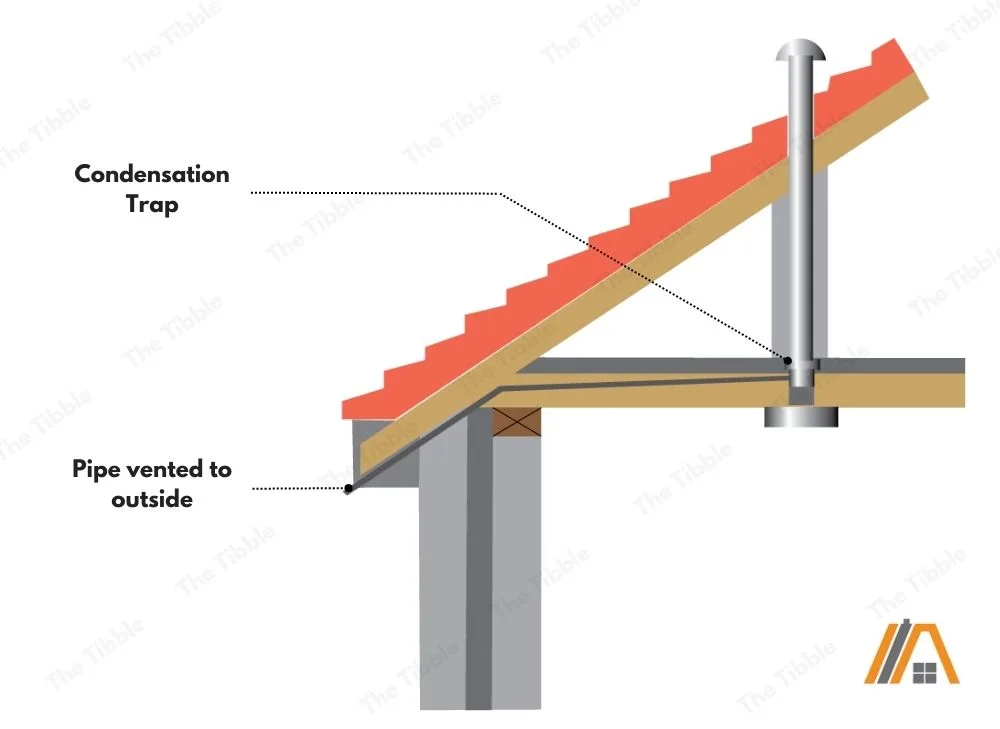
Replace or Add Insulation
The air duct should have insulation on its outer walls. The purpose of the insulation is to separate the warm air that is vented out from the bathroom from the colder air that is in the attic, ceiling, walls, and crawl spaces (depending on your fan’s ducting route). This will prevent condensation.
- UL 181 listed as a class 1 air duct and bears the UL mark.
- Flexible helix core made of 2 ply polyester laminate and corrosion resistant galvanized wire
- Surrounded by a blanket of formaldehyde free, fiberglass insulation, that helps to reduce heat and cool loss
- Jacketed by a heavy duty, fire retardant, black polyethylene vapor barrier.
Last update on 2024-03-27 / Affiliate links / Images from Amazon Product Advertising API
This insulating sleeve makes it very easy to add insulation to an existing duct. Make sure you order the right dimension and enough to cover the entire length of the duct!
In a previous article, where I discuss why range hoods drip, I have listed detailed recommendations on what to use to insulate the duct.
Sometimes you can have insulated pipes and still struggle with condensation and dripping. This is likely if your insulation is old (it can be damaged, or it can slide down over time, leaving the top part of the ventilation duct uninsulated) or you live somewhere that experiences extreme temperatures.
The solution is to replace your insulation with more robust and better-fitted insulation.
You might want to call a professional handyman to perform this task if you’ve never done it before. It requires a certain level of skill to ensure the insulation is fitted just right.
An Alternative to Duct Insulation
If you don’t want to or are unable to insulate the duct and the bathroom is facing an exterior wall, you could install a new fan on the wall instead. This requires no ductwork and can be done in an hour.
Read my article can a bathroom exhaust fan be mounted on the wall if you wish to learn more.
Replace the Roof Vent Cover
When the leak occurs only when it is windy and rainy, nine times out of ten, the roof vent cover (louver) will likely be the source of the problem. So, in this case, your first step on noticing a bathroom exhaust fan leak will be to inspect the roof vent cover.
Sometimes heavy winds, flying debris, and other outdoor elements can cause damage to the louver. Since it is on your roof, the cover is in an area of your home that suffers the most impact from nature.
If you find a bad or defective vent cover on your roof, it means that water can pass through it.
Sometimes it is not that the cover is damaged. Instead, it has been installed incorrectly, and water is leaking from the outside of the vent duct. Then it’s best to have a professional replace it as soon as possible (DIY replacement is also an option if you are up for it).
Run the Fan Longer
If you turn the fan off right after your shower or within a few minutes of this, then you might not have to do anything other than leaving it on for a little longer after showering.
The Home Ventilating Institute recommends that you keep the fan running for at least 20 minutes after the shower. The moisture does not get pulled out immediately after you flick the switch on the wall. You need to give the bathroom fan some time to eliminate all the moist air from the bathroom.
I recommend a longer period than 20 minutes.
Check out my other article where I discuss this in more detail.
Replace the Fan
If you’ve already verified that your insulation and roof vent cover are in good condition, then you probably have to replace your bathroom exhaust fan.
In most cases, you will have to upgrade to a more powerful bathroom fan that does a better job of pulling out the moist air from the bathroom.
Check out my other article if you want to find out how to remove the old fan.
Use a Dehumidifier
If you’ve tried all three of these solutions but continue to have water leaking from your bathroom fan, then until you can get a professional in to come look at your ventilation system, you can use a dehumidifier.
Colzer has a 50 Pint Dehumidifier (amazon link) as well as a 30 Pint Dehumidifier (amazon link).
Frigidaire also a 50 Pint Portable Dehumidifier (amazon link) and a 35 Pint Dehumidifier (amazon link).

